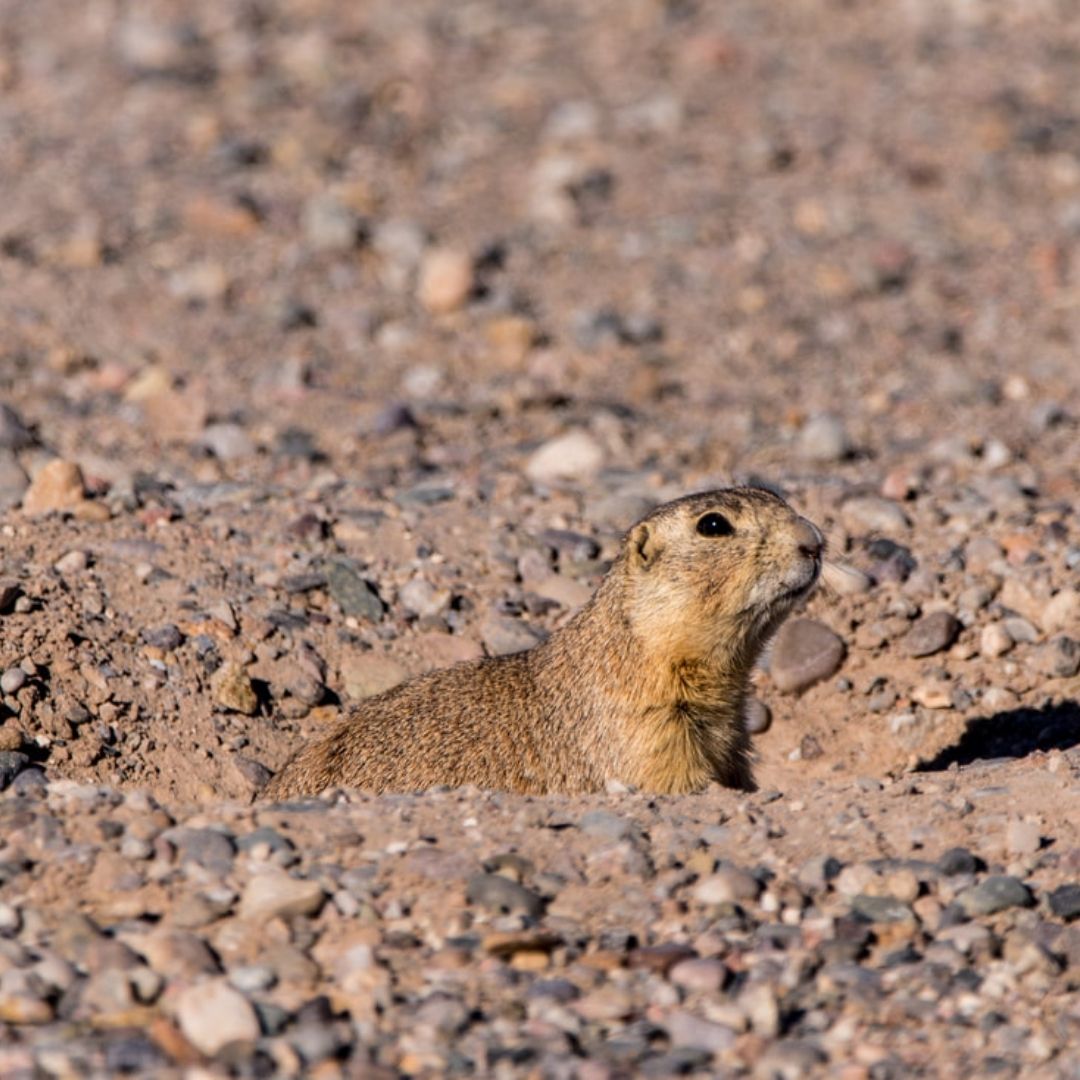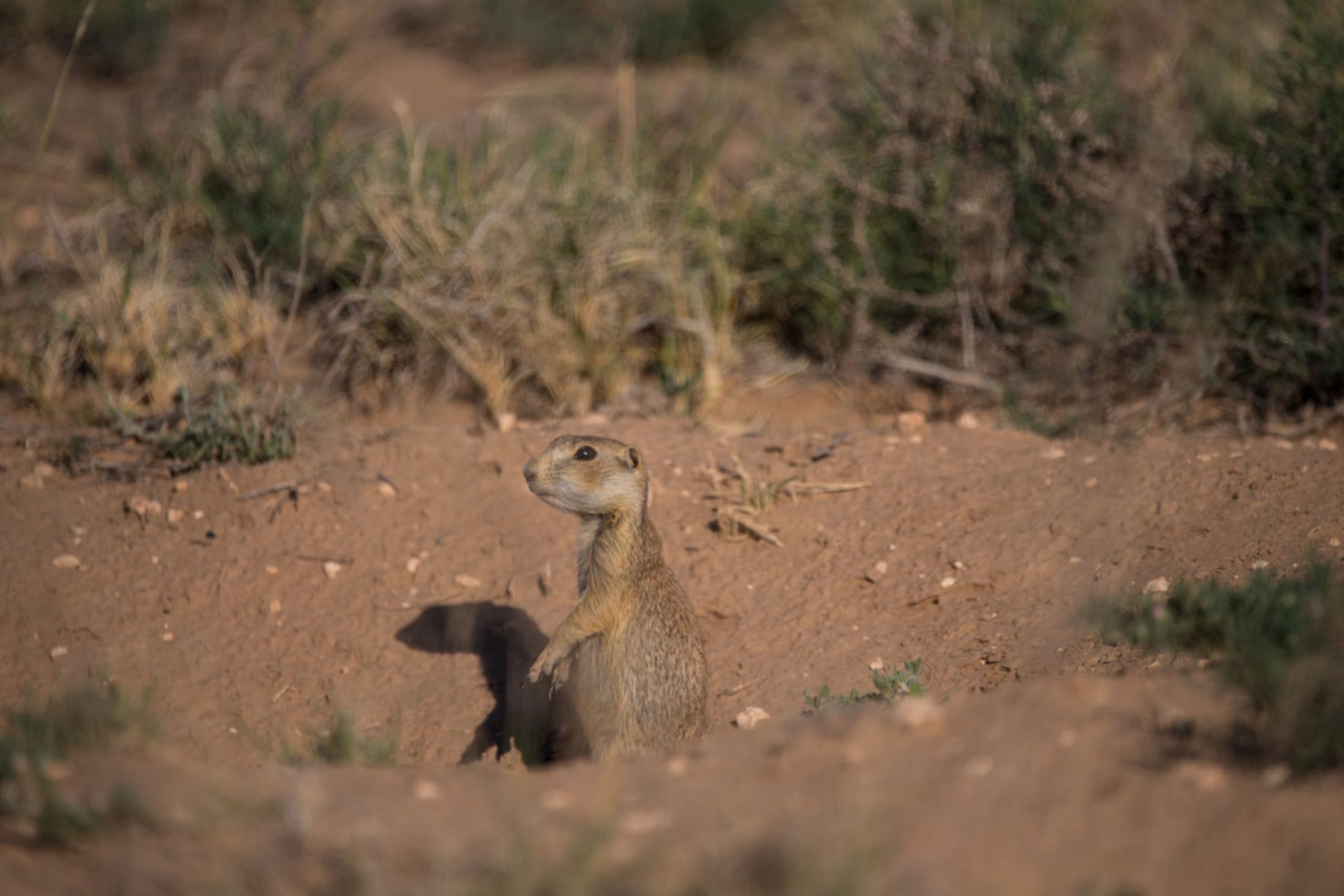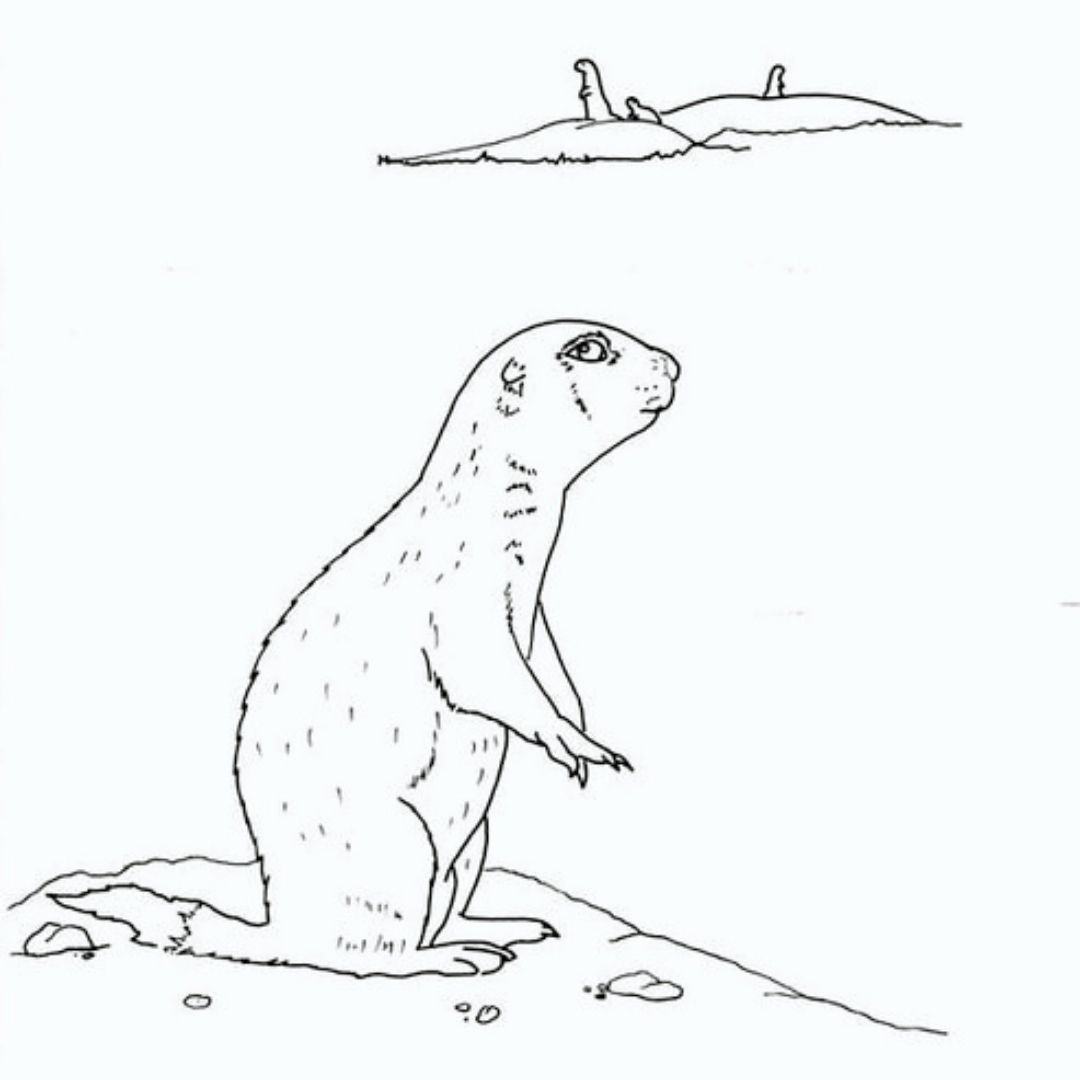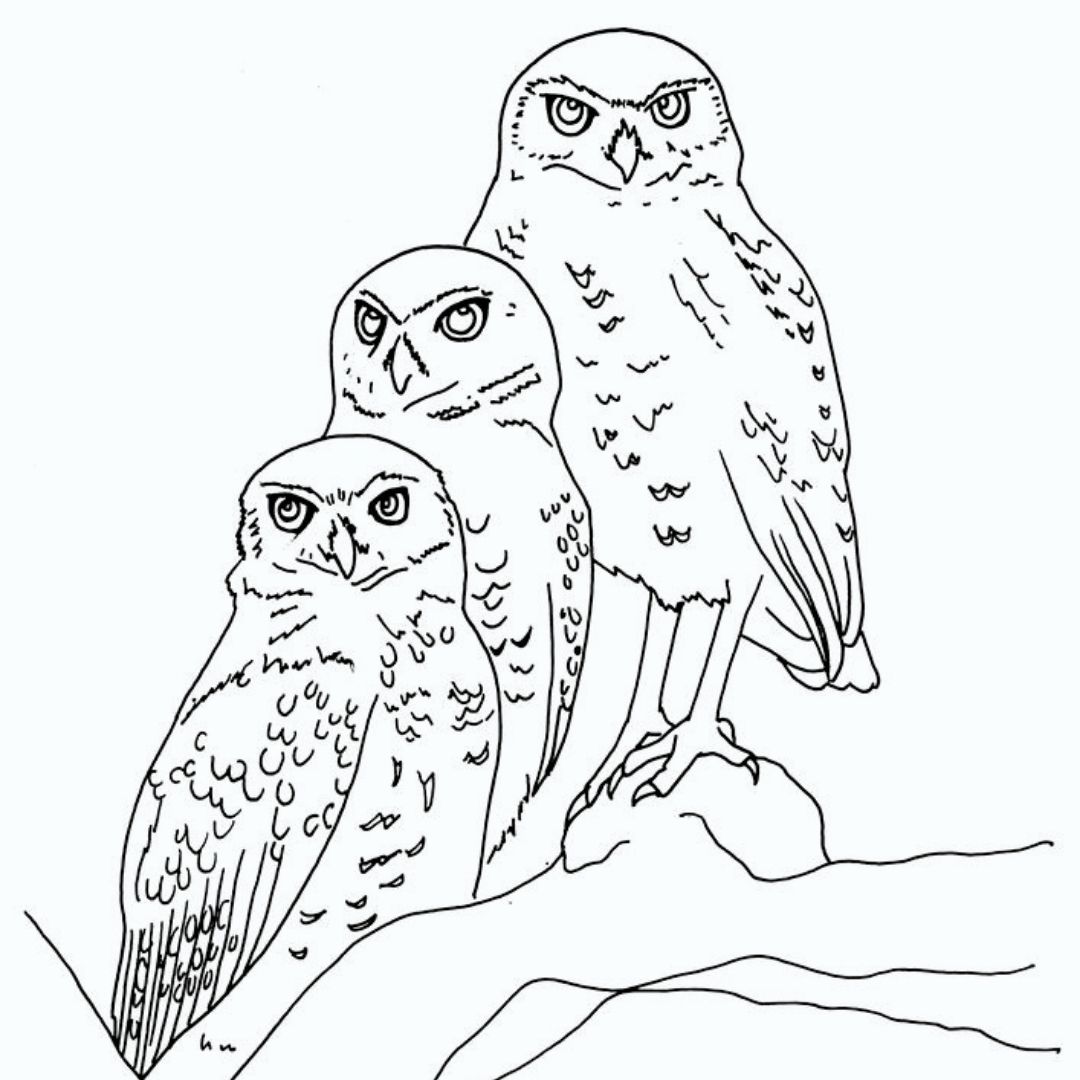The Life of a Santa Fe Prairie Dog
Shutdown got you down? Imagine hibernating!
As days get colder and shorter, wildlife prepares for winter. Bears and many rodents do this by eating lots of food before going into hibernation. They need to store extra fat in their bodies to help keep them warm – almost like a winter jacket! Some animals, like mice, double their body weight before entering hibernation. Hibernating animals lower their body temperature, heart rate and breathing rate so they can save their energy to survive through the winter.
In my neighborhood, I enjoy watching communities of prairie dogs — a head popping up every now and then as they dart around, collecting seeds for their young and cleaning out their burrows.
Prairie dogs are a type of rodent that grow to be about 15 inches tall. They are experts at living underground. They build massive networks of rooms and tunnels, creating underground towns where hundreds of dogs live together as a colony. Within the colony, prairie dogs live in smaller territories with their family group called coteries. They are mostly herbivores, meaning they eat plants; however, some prairie dogs will eat insects too. If you have ever walked past a prairie dog colony, you may have heard their high-pitched call. This “bark” gave them their name and often acts as a warning call of danger. They have many predators, including bobcats, coyotes and hawks, and they use unique warning calls for each. Other animals, like burrowing owls who often live in nearby burrows, pay attention to these warning calls, too. Prairie dogs also use other forms of communication, mostly through touch – nuzzling noses, kissing and cuddling!
Many people think of prairie dogs as pests, but they are one of the most important animals we have in Santa Fe. They are considered a keystone species, which means that many other animals rely on them to survive. Through digging, dragging pieces of plants in their burrows and going to the bathroom underground, they fertilize the soil. This means that more plants can grow, creating homes for insects, birds and other wildlife. When prairie dogs move, their old burrows provide shelter for many other animals, including rattlesnakes, jackrabbits and burrowing owls. With deep networks of tunnels, water can seep deep into the ground, preventing erosion and water loss in the hot, sandy desert.
When prairie dogs know that winter is coming, they eat as much as they can to gain an extra layer of fat on their bodies. On the coldest days, prairie dogs retreat into their burrows to slumber. Some species of prairie dogs hibernate through the winter, while others only spend days at a time sleeping. They spend most of the winter months down in their burrows, without food or water, curled up in one of their cozy rooms.

The shorter periods of sleep are called torpor. Prairie dogs in torpor lower their body temperature, heart rate and breathing rate just as they do in hibernation, but instead of spending all winter like this, they become active for a few hours every week or so. On the warmest of days, some prairie dogs will leave their burrows to feed. On a warm day this winter, see if you can spot one out of their burrow looking for a snack.
Since prairie dogs prefer living on flat, open grassland, they are often in competition with humans. We use grasslands for farming, raising cattle and building cities. Prairie dogs used to live across North America with their population reaching hundreds of millions. With these human disturbances, prairie dogs have lost most of their habitat and their population size has reduced enormously. While some colonies have survived the encroachment of cities, many have collapsed under the stress of these disturbances. If they continue to disappear, grassland ecosystems will be out of balance.
Through telling people about the importance of these small mammals, you can support the conservation of their habitats, protecting their colonies and all of the other wildlife they support.
In Santa Fe, there are several colonies of prairie dogs. On a warm day this winter, see if you can spot them! Take a walk around Frenchy’s Field and listen for their loud calls. Remember that they are wild animals, so you should not approach them or disturb them in their homes. Instead, find a spot nearby to sit and watch. If you are lucky, maybe you will get to see them exchanging nuzzles and kisses.




